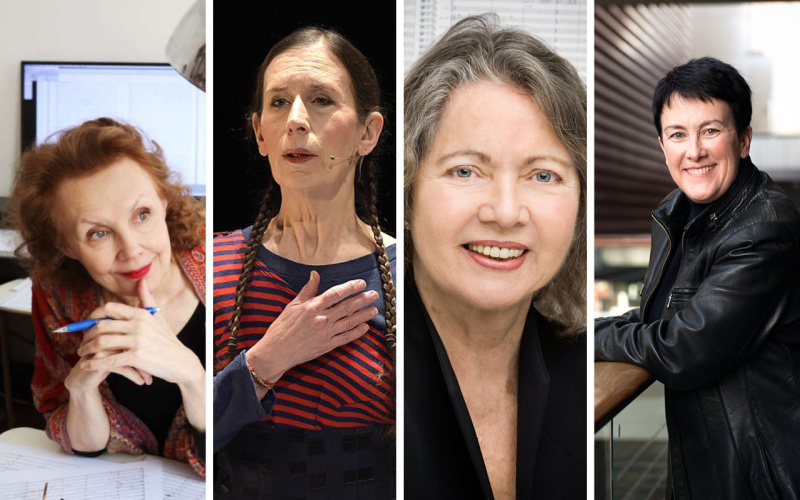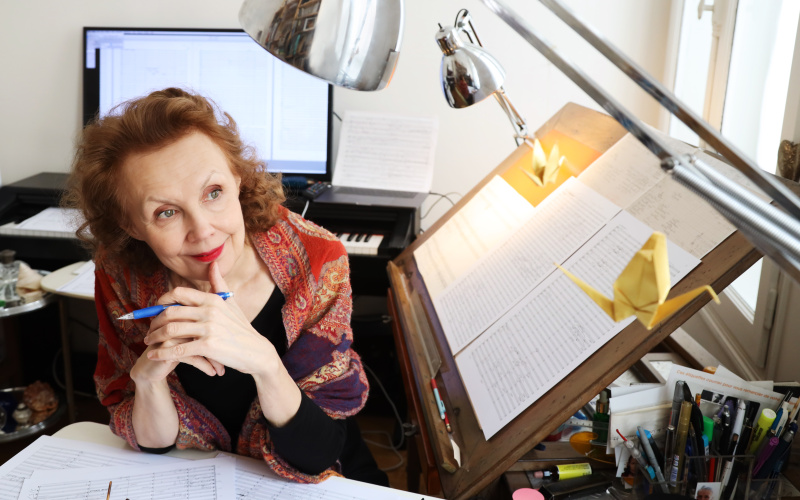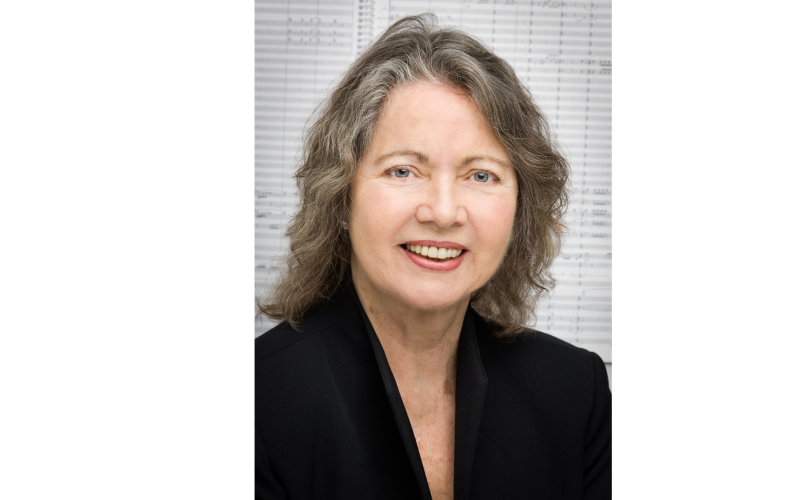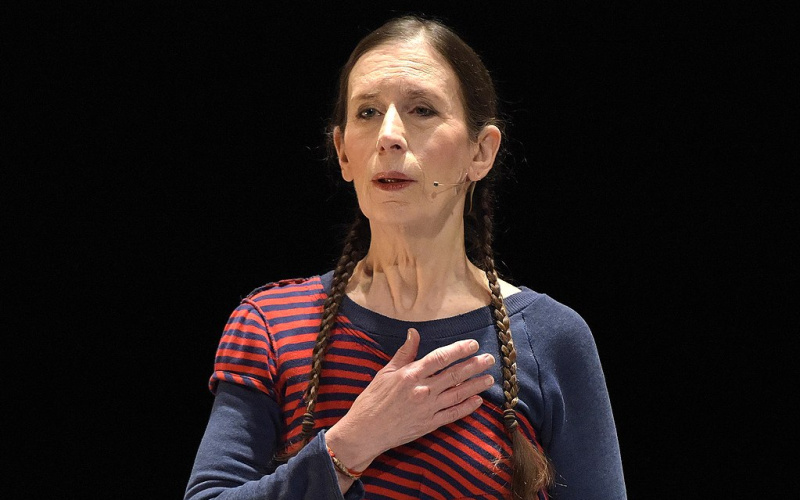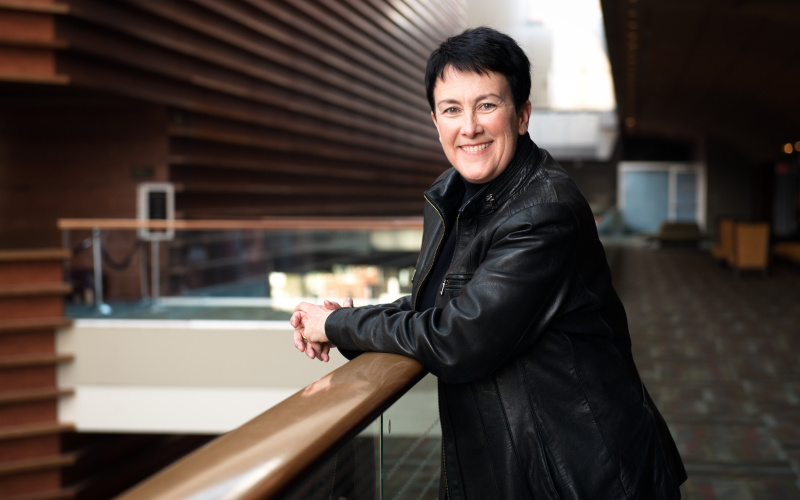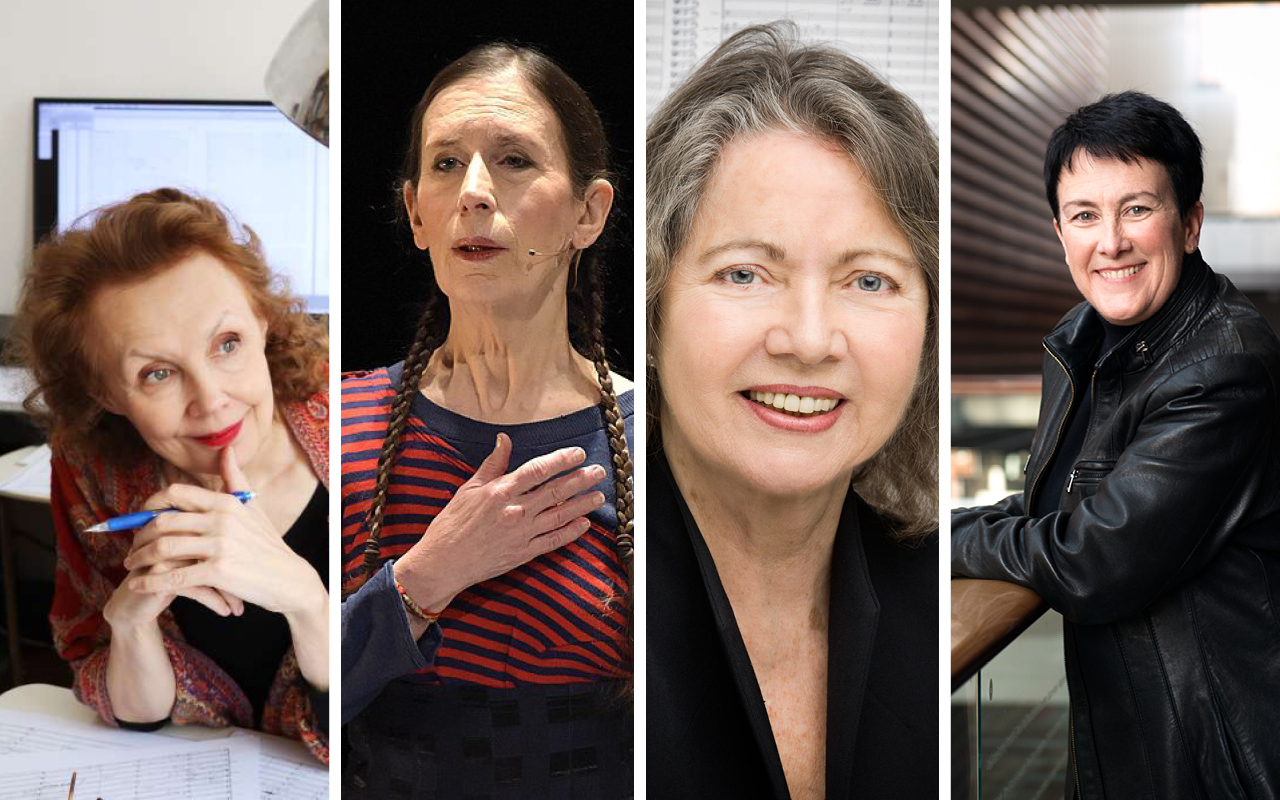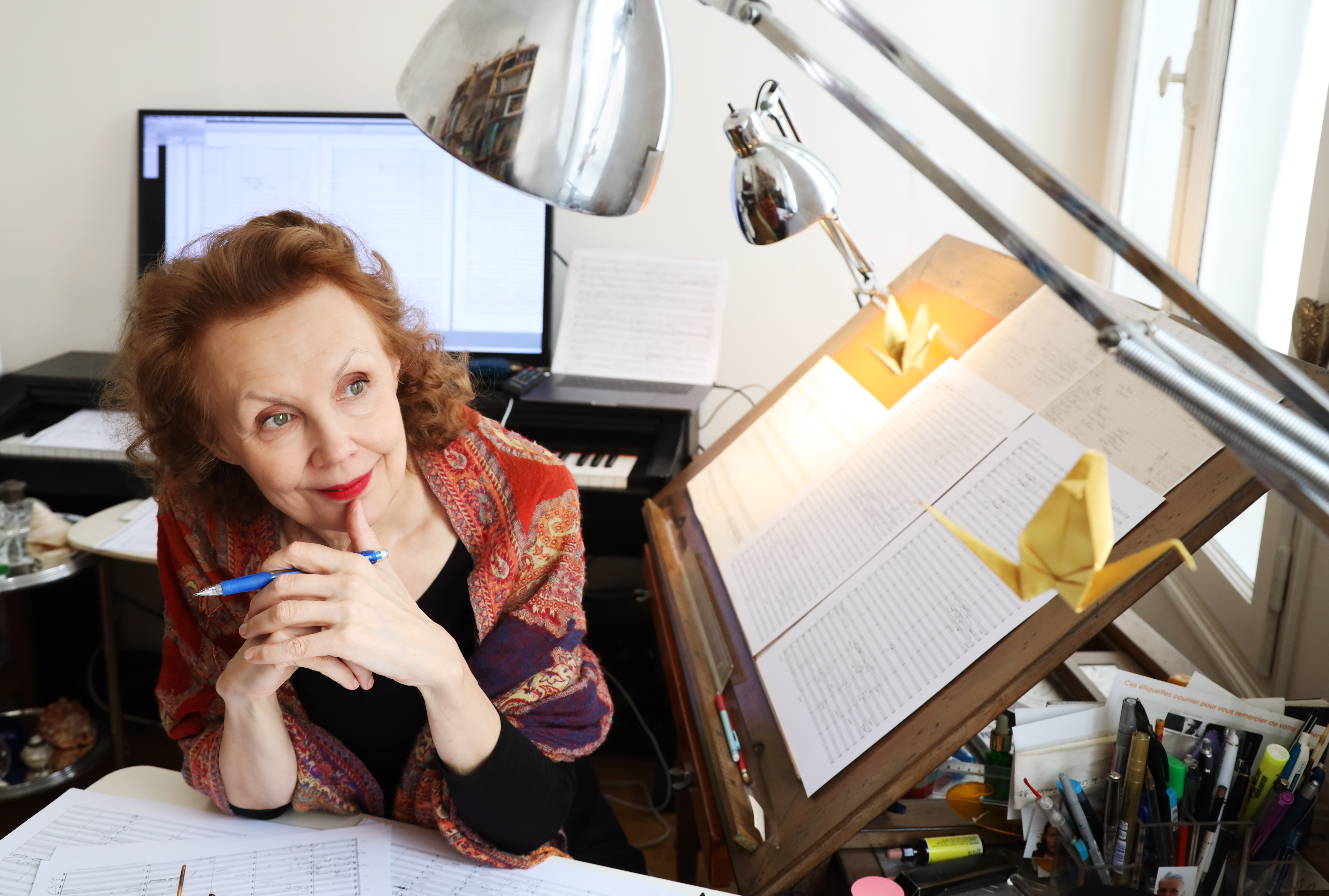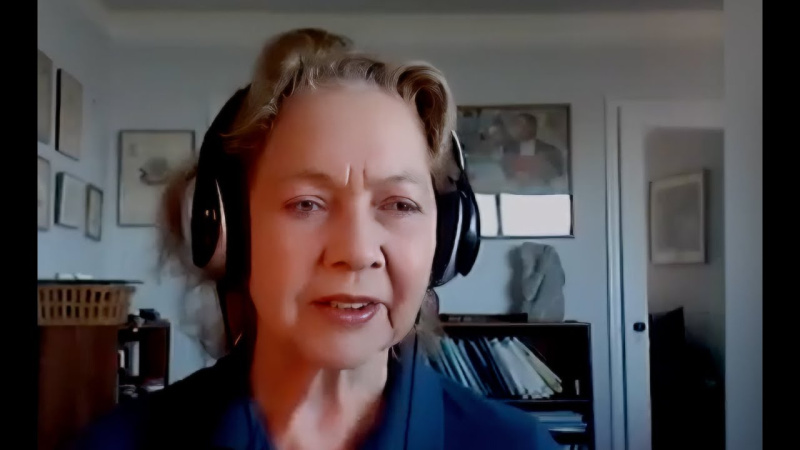Kaija Saariaho | »Femmes4Music«
the composer in conversation
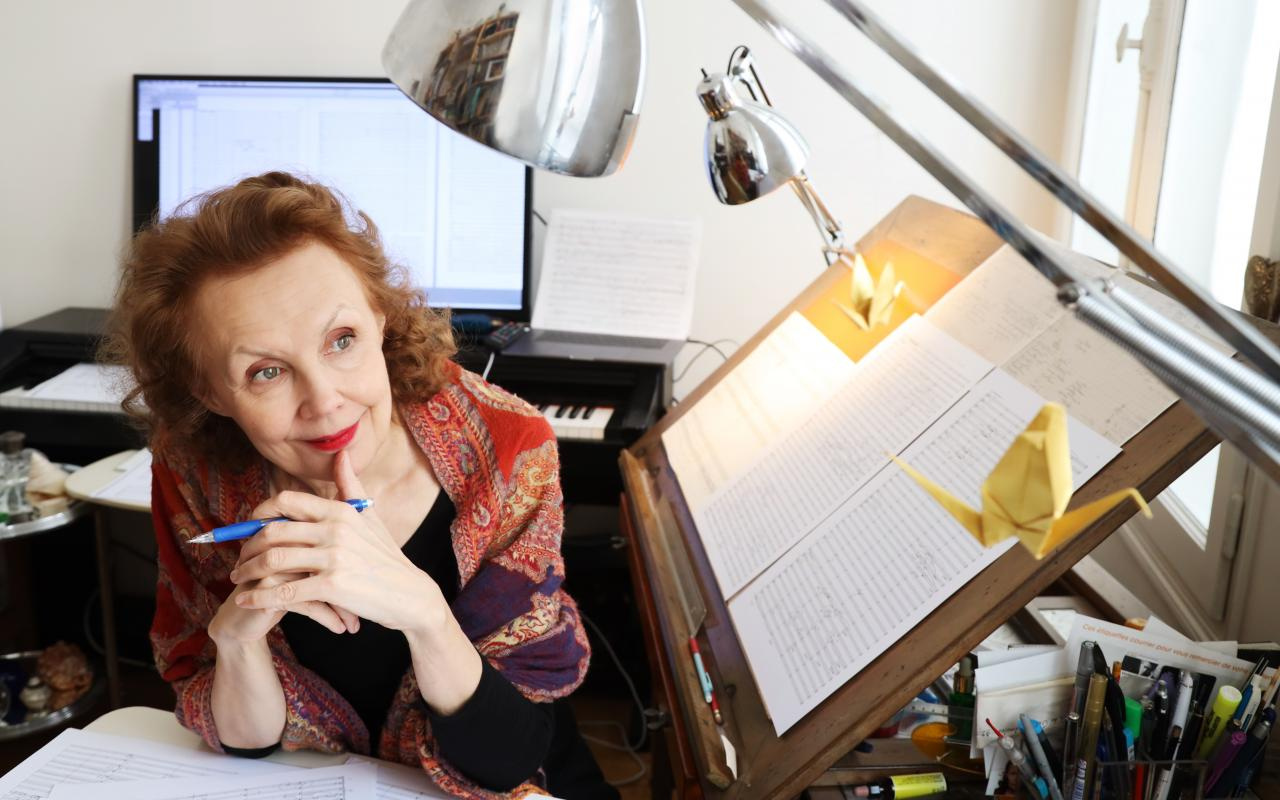
- Date
- Duration
- 46:30
Description
"Korvat auki, open your ears!" – this is the name of a society that Kaija Saariaho founded together with other young music students in Finland in the 1970s. "Open your ears!" – this is also the motto that accompanies the composer Kaija Saariaho to this day.
Korvat auki is directed against the conservative Finnish music business of the 1970s, when mainly neo-romantic composers received commissions for large operas. The students around Korvat auki, on the other hand, are interested in works of the avant-garde, which they learn about through their composition teacher Paavo Heininen at the Sibelius Academy in Helsinki, and they organize concerts and workshops in which they present these works and their own works to the public.
Saariaho continues her studies in Freiburg im Breisgau, with Brian Ferneyhough and Klaus Huber. Her own view of the avant-garde becomes more critical, she finds many works »musically quite boring«. As if shouting the motto »Open your ears!« to the avant-garde now, she finds fault with the fact that compositions often implement concepts that have »nothing to do with the laws of perception,« and that works are »not really handling any musical issues.«
In 1982 Saariaho goes to Paris, to the Institut de recherche et coordination acoustique/musique (IRCAM), the research institute for music and acoustics founded a few years earlier. There she intensively studies the aforementioned laws of perception, which for her are part of the basic tools of composing. At IRCAM there is close exchange with other composers, researchers and developers. Saariaho gains insight into the fields of acoustics and psychoacoustics and gets access to the latest research results. She learns programming languages and studies algorithmic composition and electronic sound synthesis. What she learns here in computer music will also influence the way she composes for instruments without computer.
Her first internationally successful work for orchestra and tape, »Verblendungen«, is written, and Saariaho is already applying her newly acquired knowledge. She sets herself the difficult compositional task of beginning the work with the climax and then steadily reducing the volume and musical energy over a period of 14 minutes. To ensure that the flow of the music is not lost in the process, she plans several simultaneous lines of development. For example, the orchestra begins with pitch-oriented sounds and ends with noiselike sounds (in which no exact pitch can be perceived). The tape moves in the opposite direction: it begins with noise and ends with pitch. In spite of all the theory that goes into the piece, however, the final authority for Saariaho always remains her ear, with which she decides whether a note or sound is well placed or needs to be corrected.
Credits: Dominik Kautz (Curator), Dominique Theise (Curator), Peter Weibel (Concept)
Production: ZKM | Video studio
